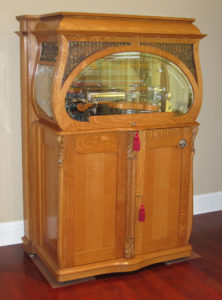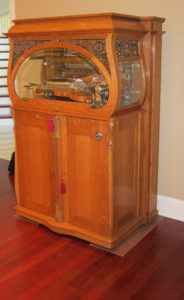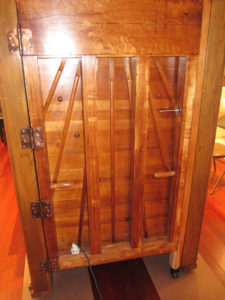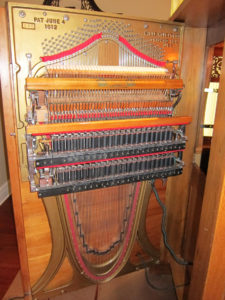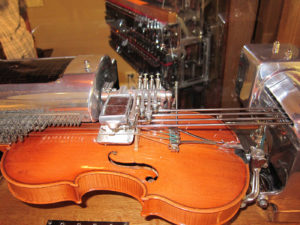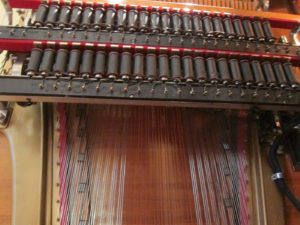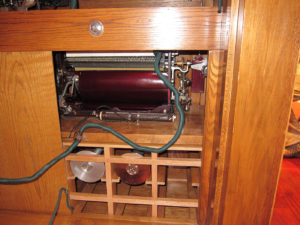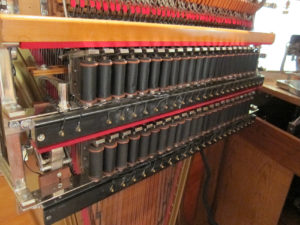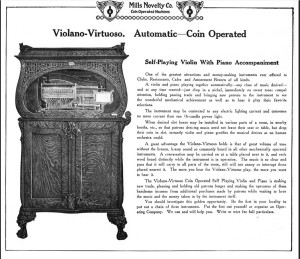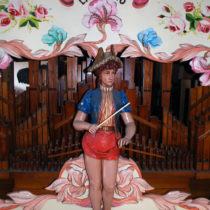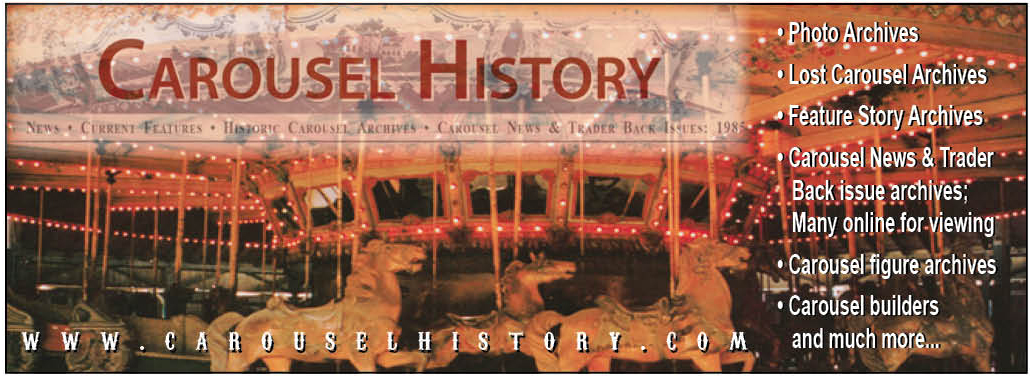Description
The Violano-Virtuoso was invented by Henry Konrad Sandell, a contemporary of Thomas Edison, who arrived in Chicago via Sweden in 1888 at the age of twelve. In March 1905 Mr. Sandell applied for his patent for an electric self-playing violin. It was granted in December of 1905 and assigned to the Mills Novelty Company. The first instrument produced, the Automatic Virtuosa, only contained the violin. During that time, coin-operated player pianos were very popular so it didn’t take long for the Mills Novelty Company to realize that the violin by itself was not going to be marketable enough. Most of the Automatic Virtuosa violins were sent back to the factory to be retrofitted with a piano.
When the Mills Novelty Company set out to produce this instrument they faced the task of finding a “true” violin that could be played for hours on end without losing its sound quality or tone. They tested over two hundred violins by prominent makers of the day but after many failed findings the company set out to produce violins in their own factories to suit the particular needs of a self-playing violin, which included correct principles as to height of the arch, placing of sound post and “extra thick” backs.
The Violano-Virtuoso was first displayed at the Alas-Yukon-Pacific Exposition in Seattle, Washington in 1909 but didn’t become available to the public in quantity until around 1911. They were usually coin-operated machines.
The United States patent office designated the Violano-Virtuoso “one of the eight great scientific instruments of the decade” and all the instruments proudly displayed that information with a printed paper label attached above the piano board that was easily viewed through accordion-hinged glass doors. These instruments, unlike others of the time period, operate the violin and piano by electric motors or magnets and not pneumatically (compressed air). When the starting lever is tripped either manually or by a coin it starts the perforated music roll, which usually carried five songs, while the roll revolves a metal brush passes over the paper making electrical connections through the perforations. The piano portion of the instrument is played by regular hammers using the standard player piano movement of forty-four notes, half the number of keys found on a normal piano board. And with the distinctive layout of the strings having the bass strings at the center of the frame and the treble strings extending out from the center, it gives a unique but classic sound. Some say the instrument is a marvel of simplicity both in construction and operation.
Every component of the Violano was engineered to withstand the rugged journeys they would make all over the World and to perform reliably under constant use in commercial establishments. An ingenious tuning system with adjustable weights providing tension on the strings, allows the owner to tune the Violin without professional assistance.
In their day, Violanos performed in thousands of public venues and in the homes of the wealthiest families around the country and overseas. There was even one made for the Smithsonian Institute.
The Bow-Front Models were extremely rare even at the time of manufacture costing considerably more that the single of even straight cased double models, Bow-Fronts were only purchased by society`s elite and prominently displayed in ones castle or estate. It is estimated about 2000 of the single violano instruments still exist, but ONLY 22 Bow-Front models are known.
The only comparable public sale record we could find from a reputable auction house would be The Millhouse Collection Lot 742 February 25-25 2012 selling at $207,000.00 USD
Dimensions: 71″ x 47″ x 30″
Weight: 350 lbs


